Are we of Dostoyevsky’s tribe; will beauty save the world?
In Meeting with Artists in the Sistine Chapel in 2009, His Holiness Pope Benedict XVI said:
Beauty pulls us up short, but in so doing it reminds us of our final destiny, it sets us back on our path, fills us with new hope, gives us the courage to live to the full the unique gift of life.
( . . . )
Too often, though, the beauty that is thrust upon us is illusory and deceitful, superficial and blinding, leaving the onlooker dazed; instead of bringing him out of himself and opening him up to horizons of true freedom as it draws him aloft, it imprisons him within himself and further enslaves him, depriving him of hope and joy. It is a seductive but hypocritical beauty that rekindles desire, the will to power, to possess, and to dominate others, it is a beauty which soon turns into its opposite, taking on the guise of indecency, transgression or gratuitous provocation. Authentic beauty, however, unlocks the yearning of the human heart, the profound desire to know, to love, to go towards the Other, to reach for the Beyond. If we acknowledge that beauty touches us intimately, that it wounds us, that it opens our eyes, then we rediscover the joy of seeing, of being able to grasp the profound meaning of our existence.
Granted insight, vision, light, or some other clarion call do we snatch it up and make away with it? Are we like treasure hunters discovering the trove elated now our fortune’s made? Or do we receive inspiration as from a Lover’s hand; our pleasure in the Giver making sweet the gift? Having taken up our bounty to shape and hammer, tune, and test for brightness do we then hand it back again? Can we release our claim upon it as once a child is grown we commend her to the service of her calling?

 Mount Tabor Talks
Mount Tabor Talks Sacred Sites: The Holy Land in the Heart of Italy
Sacred Sites: The Holy Land in the Heart of Italy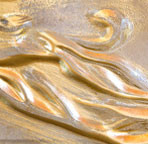
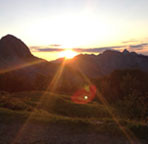
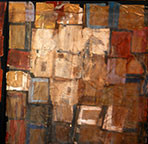
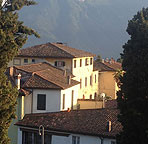
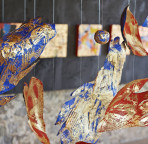
“That which is lovely draws us to itself by virtue of its inherent quality. Whatever it may be, there is something within it that stirs our souls, captivates us in some way, and invites us to desire it. The Lovely lifts our spirits and gives us a glimpse of something extraordinary–something more wonderful than what we would normally experience in our daily lives.
“The knowledge of God as revealed in the scriptures is among the loveliest of all things: it reveals a better, more beautiful, way of living; it lifts our minds to a more profound level of thinking; it transports our souls to a higher realm of existence; and transforms our actions into a better way of living. It is the Pure Lovely that turns us into a new creation.
“Heavenly Father, by your Holy Spirit, keep my mind from wandering from the lovely; help me dwell upon that which is most lovely, most captivating, and perfect above all things–our Lord and Savior.”
[a devotion on “Whatsoever things are Lovely” from “Following Christ”]
In Experiencing authentic beauty, I am transported to the higher realms, within which my higher soul is awakened. In this state, experiencing the Eternal, I am filled with awe and gratitude for the gift of life, so beautiful, so miraculous.
Amen to that. And how would you say that we apprehend authenticity? What do you think?
Wow, hard to put into words, but I’ll try. For me, it’s an intuitive sense where I feel expanded, lighter, free of the chaos of the cluttered mind. It’s like the boundaries of “me” disappear and I feel myself embedded within, at one with, connected to the larger universe. Here, within this experiencing of timelessness, I can feel the pure essence of the qualities of spirituality (peace, clarity, acceptance, love, gratitude).
yes, and thinking about Beauty can also lead us to consider her relationship to Truth and to Goodness
…
returning to Pope John Paul’s Letter to Artists
The link between good and beautiful stirs fruitful reflection. In a certain sense, beauty is the visible form of the good, just as the good is the metaphysical condition of beauty. This was well understood by the Greeks who, by fusing the two concepts, coined a term which embraces both: kalokagathía, or beauty-goodness. On this point Plato writes: “The power of the Good has taken refuge in the nature of the Beautiful”.
“Beauty is Truth and Truth Beauty…” What does this mean, and how is this so?
Among other things, the artist’s vocation is to focus realities so that we can notice them. Not only is reality so complex that we need to screen a lot out just to get on with our day. The bible tells how the best goods and the worst evils are too much for us. “No one can see God and live!” There are depths of human degradation that so revolt us that we instinctively turn away. The artist serves the truth by framing these realities in ways that give us a glimpse of more than we thought we could bear. Think of how soaring choral music pierces through the veil to touch us with the Sacred! Think of the Moissac tympanum of Christ in glory–how the expressions of sculpted thurifers make us also gasp at the Presence of One Who is infinitely more than we can ask or imagine! Turning to the darker side, think of how Picasso’s “Guernica” or the holocaust documentary “Night and Fog” frame apocalyptic chaos with such artistic precision that they enable us to face the horrors of war. How could Christians miss the Divine artist trying to to tell the truth about our human condition: God, dying on a cross, to expose the worst that we can suffer, be, or do, by framing it with the ironic reversals of Divine Love.
Marilyn McCord Adams
Thank you for this. And thanks to the ancient Greeks as well. I can now see the connection between Beauty and Goodness. But I can’t see the connection between Beauty and Truth.
This collision (collusion?) between the Good and the Beautiful is powerfully illustrated in a familiar Greek word that serves also as the title of an invaluable collection of texts on noetic prayer: The Philokalia. Many of us have, perhaps, pored over the texts of those volumes without noticing that title’s reach. The kala from which we receive -kalia implicates both goodness and beauty, yielding a gesture (the love of the good and the beautiful) that is already capable of relaxing, of merging our mistaken dichotomies. And this “intuitive” sense of which Susan writes is as likely a clue as any to the action of the “nous,” that supra-rational faculty through which the Spirit speaks and by which we pray. Bishop Kallistos Ware calls the nous the “intellective aptitude of the heart,” and, duly cleansed, it can become the faculty by which we apprehend beauty, goodness, love, and the very kingdom of God.
Thank you, Scott. It’s helpful to think of the gesture of loving goodness/beauty as a way to reach beyond dichotomous thinking to find a way to Oneness.
I love the word “intellective”. I really resonate with Bishop Ware’s words.
The concept of Truth is still elusive to me. I can’t seem to get an intuitive sense of its higher meaning/essence beyond the mundane.
One of the common words the Latin doctors used to speak of beauty was “forma.” By this they meant a certain “fittingness.” A “rightness.” A sense of the whole–which an image, a gesture, an utterance can lead us toward. Beauty, for them, was a kind of participation in this wholeness, in whatever partial or broken way. And herein lies the wisdom of their insight: beauty, they presumed, was only perfect in the divine. And yet, in the often stumbling attempts of human art–and I use this word in the broadest (and truest) sense–, we find ourselves as makers or takers invited to participate in this “form.” Beauty, for them, was an experience. Not an idea, nor a feeling–though it could be, and should be, both. But the thought of beauty, or the feeling of the beautiful, was always, they knew, a process, a journey, a gesture toward “the whole.” It is for this reason that Hans Urs von Balthasar entitled the opening volume of his compelling multi-volume series on theological aesthetics “Seeing the Form.” And what he means by seeing is not the detached view of a spectator, but the participatory experience of one who is involved in what she sees. Who experiences a sense of the whole. Who participates in the form. Good sense for our conversation, and for our times.
Everybody, in a sense, is either investing or wasting, all the time, every day.
The two dialogue in an attempt to figure out the best course of action. It is wise to become the observer
as the Buddha suggests.